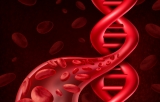
Other Red DNA stains
Red DNA stains are vital tools in molecular biology, facilitating the visualization of DNA in various research applications. These stains are designed to selectively bind to DNA molecules, allowing researchers to observe and study genetic material under different imaging techniques. In live-cell imaging, red DNA stains play a crucial role in tracking DNA dynamics and structures within cells without causing significant harm or interference with cellular processes. Additionally, in techniques like agarose gel electrophoresis, red DNA stains are used to visualize DNA bands, aiding in the analysis of DNA fragments based on their size and migration patterns. The development of red DNA stains has significantly advanced molecular biology research by providing safer and more sensitive alternatives to traditional DNA dyes, enhancing the accuracy and efficiency of genetic studies.
Our product range offers a variety of options for nucleic acid gel staining, ranging from highly concentrated dyes to convenient kit formats. Whether you need a reliable solution for routine DNA staining or a specialized product for precise gel visualization, we have what you need.
In this category our dyes are designed to provide high sensitivity and excellent stability, ensuring consistent and reliable results with each use. Whether you're conducting routine analyses or advanced molecular biology research, our products are tailored to meet your needs.
Resultaat van uw zoeken : 19 product gevonden
Verfijn uw zoekopdracht :
- Unconjugated 11
- human 1
- mouse 1
- mouse 1
- Buffers and reagents 9
- Biochemicals 6
- Inhibitor/Antagonist/Agonist 2
- Primary antibody 1
- kit 1
- IHC 1
- IP 1
- WB 1
- 1F8 1


